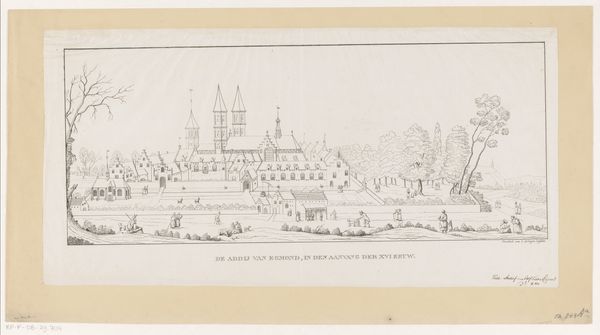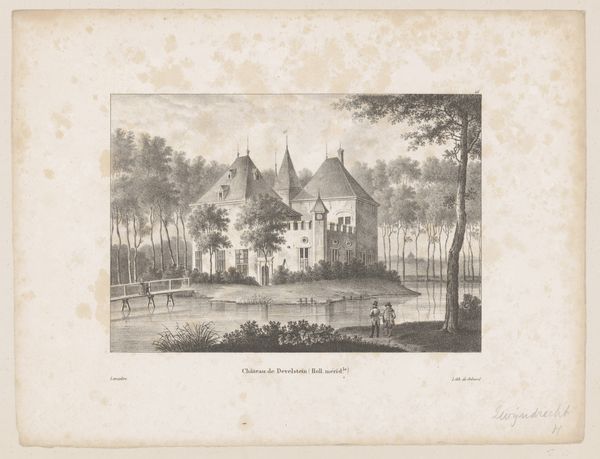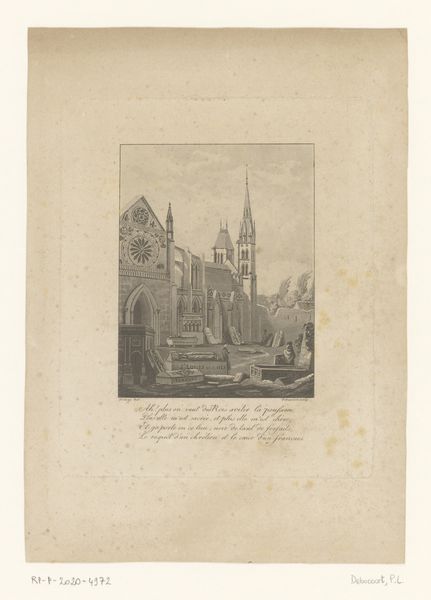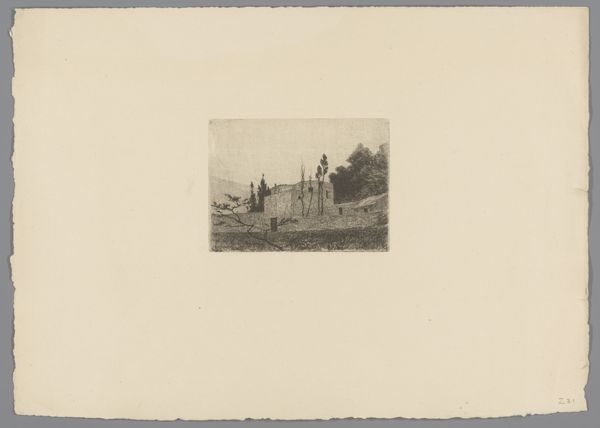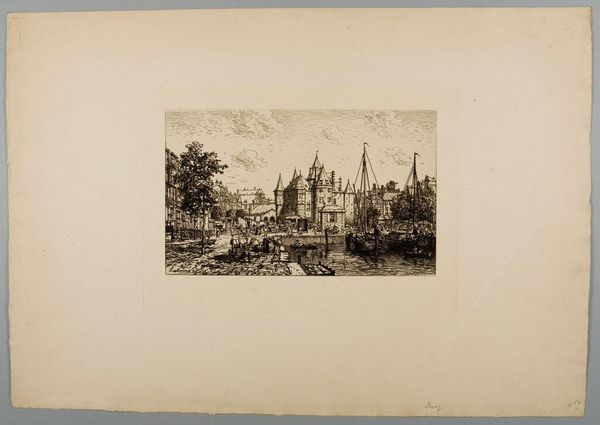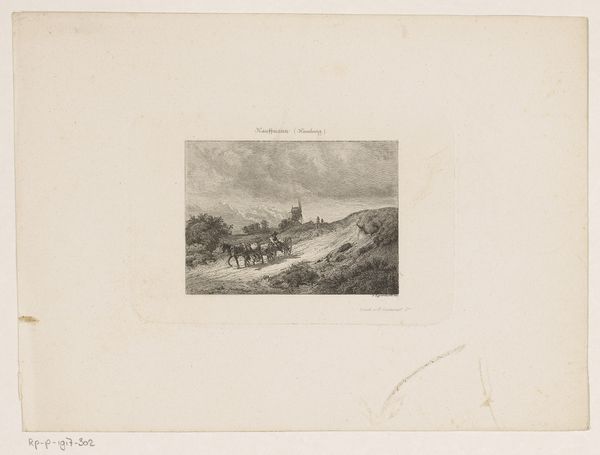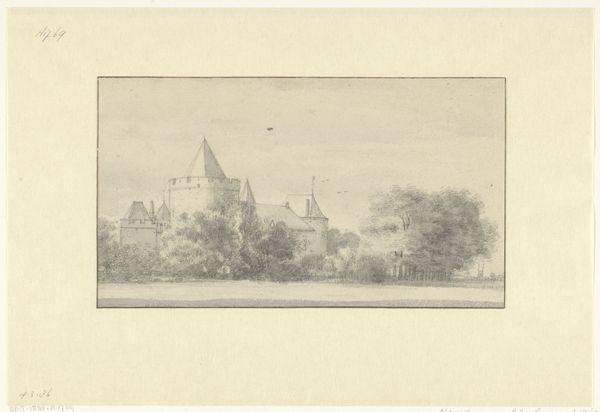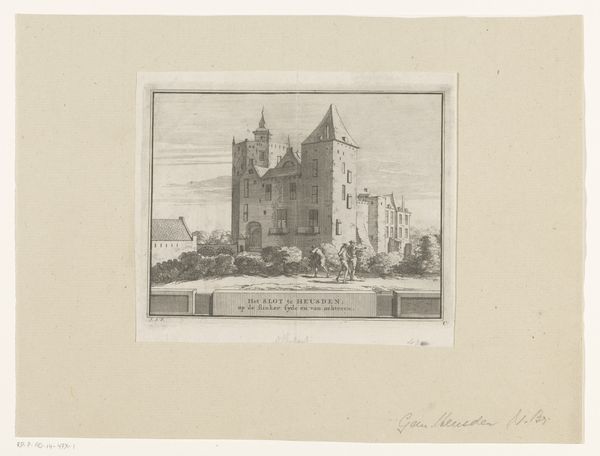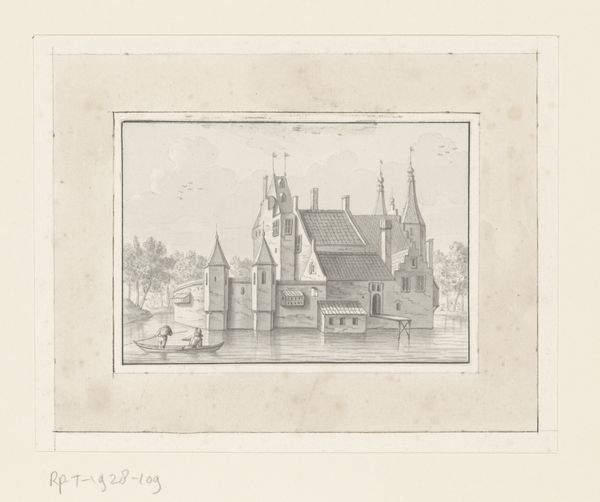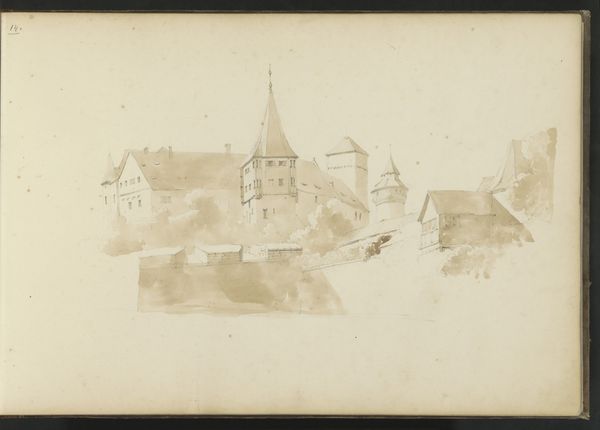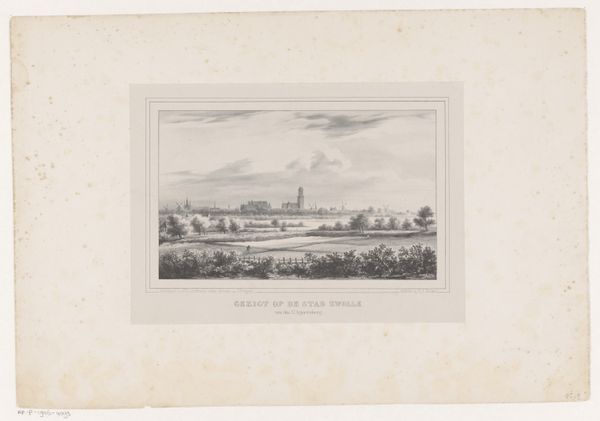
Dimensions: height 292 mm, width 391 mm
Copyright: Rijks Museum: Open Domain
Editor: So, this etching is entitled “Gezicht op de Basiliek van de H.H. Wiro, Plechelmus en Otgerus,” dating roughly between 1880 and 1920, and it's rendered in a neoclassical style. I'm struck by how serene and still the scene feels. What layers of meaning or historical context might we unpack here? Curator: Indeed. Looking at this cityscape, rendered through the precise technique of etching, it's impossible not to consider the power dynamics inherent in representing religious architecture. The Basilica, in its imposing structure, signifies not only spiritual authority but also social and political control, doesn't it? How might the artist be subtly commenting on the relationship between the church and the people through this landscape? Editor: That's fascinating, I hadn't considered it in that light. I was so focused on the picturesque quality, I missed the potential for social commentary. Is there anything about the chosen viewpoint or the specific architectural details that might further inform that reading? Curator: Absolutely. Think about the period it was created, between 1880 and 1920 – a time of rising secularism and questioning of traditional authorities. The Basilica is positioned almost as a fortress, separate from the viewer by the river. The lack of people, of visible community, might be a deliberate choice, underlining a sense of detachment, or even alienation from religious institutions. What do you think about the framing used within the print, almost creating another layer of separation? Editor: That makes so much sense. The framing almost boxes the image in and makes it feel like a world set apart. Thank you for this insightful analysis! Curator: It is in this constant questioning and critical revisiting that we might better apprehend the complex, multi-layered conversation any artwork proposes. Always delve deeper!
Comments
No comments
Be the first to comment and join the conversation on the ultimate creative platform.
